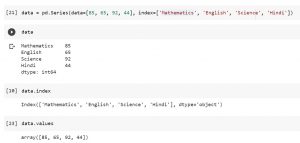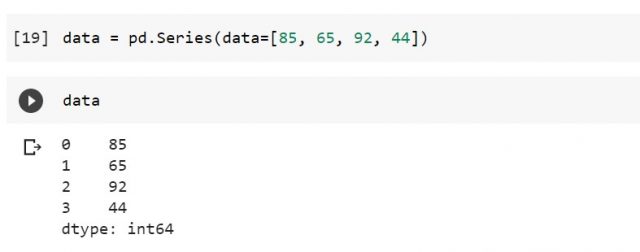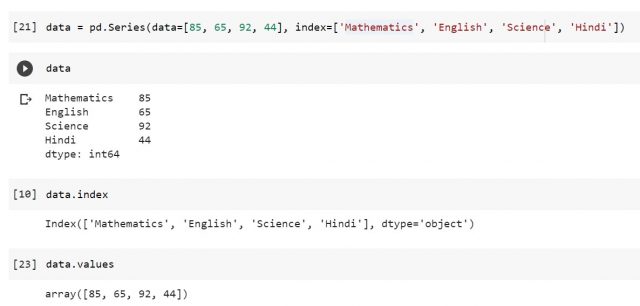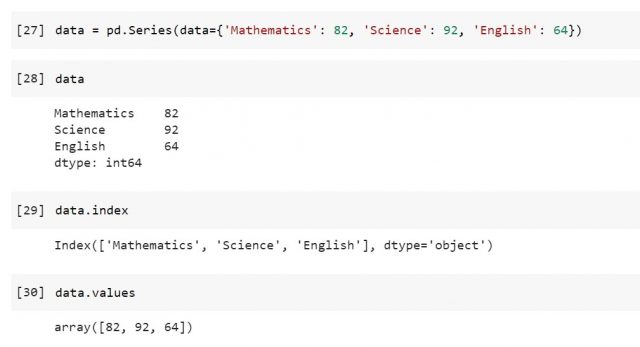
In this post, you will learn about one of the important Pandas fundamental data structure namely Series and how it can be used as a dictionary. It will be useful for beginner data scientist to understand the concept of Pandas Series object.
A dictionary is a structure that maps arbitrary keys to a set of arbitrary values.
Pandas Series is a one-dimensional array of indexed data. It can be created using a list or an array. Pandas Series can be thought of as a special case of Python dictionary. It is a structure which maps typed keys to a set of typed values.
Here are the three different ways in which a dictionary can be created using Series object:
Series like one-dimensional Numpy Array
data = pd.Series(data=[85, 65, 92, 44]

In the above Series object, the indices default from 0 to 3. One can access values using syntax such as data[0] is 85, data[3] is 44. The values and index can be printed using commands such as data.values and data.index.
It may look like the Series object is basically interchangeable with a one-dimensional NumPy array. The essential difference is the presence of the index: while the Numpy Array has an implicitly defined integer index used to access the values, the Pandas Series has an explicitly defined index associated with the values.
Series with explicitly defined Index with values of any type
The following is another manner in which a dictionary from Series can be created:
data = pd.Series(data=[85, 65, 92, 44], index=['Mathematics', 'English', 'Science', 'Hindi'])

In the above Series object, you would see an explicitly defined index. This explicit index definition gives the Series bject additional capabilities. The index need not be an integer. It can consist of values of any desired type. The index must be a hashable type and need not be unique. The object supports both integer- and label-based indexing
Series with Explicitly defined Index with values of any type – II
Here is another manner in which Pandas Series object can be created as a dictionary:
data = pd.Series(data={'Mathematics': 82, 'Science': 92, 'English': 64})

- Coefficient of Variation in Regression Modelling: Example - November 9, 2025
- Chunking Strategies for RAG with Examples - November 2, 2025
- RAG Pipeline: 6 Steps for Creating Naive RAG App - November 1, 2025
I found it very helpful. However the differences are not too understandable for me